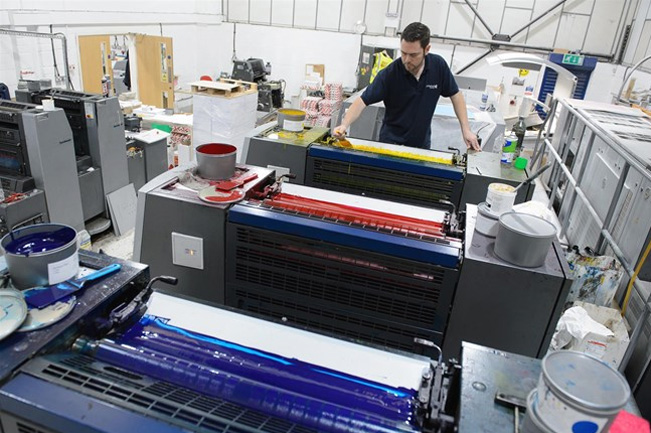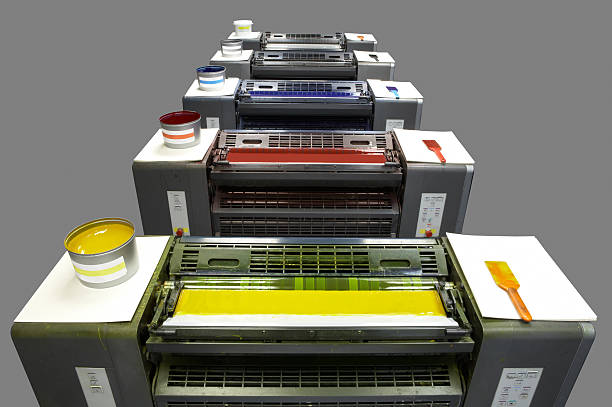A Comprehensive Guide to Comprehending Litho Printing Techniques
The world of litho printing, a strategy stemming from the late 18th century, is a fascinating blend of history, innovation, art and scientific research. This comprehensive guide will decipher the intricacies of this printing method, from the structure of litho inks to the difficulties faced in modern applications. As we venture right into the ins and outs of lithography, the relevance of automation and sustainability in ensuring its future significance ends up being significantly clear. Remain with us as we journey into the fascinating realm of litho printing.
The Historic Development of Litho Printing
The historical trajectory of litho printing, a critical innovation in the realm of communication, is an exciting tale of human resourcefulness. The process developed with the development of the rotating press, which considerably enhanced efficiency. Each phase of litho printing's development showcases humanity's unrelenting pursuit of performance and quality in visual communication.
Decoding the Scientific Research Behind Litho Printing Inks
Moving on in the expedition of litho printing strategies, the focus currently shifts to the scientific research behind litho printing inks. The composition of these inks, their drying procedure, and color mixing methods create the foundation of this complicated art form. Comprehending these aspects is crucial to understanding the craft and achieving the preferred print results.
Structure of Litho Inks
In lithographic printing, the fundamental duty of litho inks can not be overemphasized. The structure of litho inks differs depending upon its function, but typically, they include two main elements - pigments and automobiles. Pigments, the color-providing aspects, are finely ground fragments put on hold in the car, a liquid that carries the pigment onto the printing surface. The lorry is a complex blend of oils, solvents, and resins, which affect the ink's drying out time, attachment, and gloss. In addition, various ingredients exist to improve certain buildings like flow, drying out, and resistance to environmental results. Each component plays a critical component in the last print's top quality, making the specific formula of litho inks an intricate scientific research.
Ink Drying Refine
From the make-up of litho inks, interest turns to the interesting procedure of ink drying. The drying process is vital, as it impacts the last print's top quality and durability. 2 key approaches are made use of in litho printing: oxidative drying and absorption. Oxidative drying includes the ink reacting with oxygen in the air to form a difficult, dry movie. This technique supplies a sturdy surface, however can be slower compared to absorption. Absorption, on the other hand, includes the ink permeating right into the paper fibers, which is a much faster process however can bring about less vivid colors. The option in between these techniques is dependent upon elements such as print rate requirements, the paper type utilized, and the preferred finish.
Shade Combining Methods
While the drying out process plays a key function in litho printing, the science of color blending techniques holds equivalent significance. The scientific research behind litho printing inks also takes right into account the transparency of the ink, see this page which affects just how shades overlay and mix.
The Art and Style Components in Litho Printing
Litho printing breathes life right into art and style with its distinct aspects. Litho printing fits a variety of shades, making it possible for musicians to produce dynamic and vibrant prints. This combination of accuracy and adaptability makes litho printing a favored option for numerous artists and developers.
Modern Applications of Litho Printing Methods
Litho printing techniques have actually discovered extensive usage in the modern-day business sector. Its impact and significance proceed to grow with the introduction of new technologies and innovations in the area. This section will certainly discover these modern applications and the transformative duty they play in the printing market.
Business Litho Printing Uses
In today's digital age, one might question the significance of typical printing techniques. Yet, litho printing stays an important part of the business industry. High-volume printing jobs, such as the manufacturing of books, papers, and packaging, count on litho printing for its capacity to supply exceptional image high quality and price efficiency. The process, which includes moving an inked picture from a plate onto a rubber blanket and after that to the printing surface, uses unmatched uniformity. This makes it perfect for jobs calling for a huge print run. Litho printing additionally provides a wide color range, above that of electronic printing. This makes it the best option for tasks that require lively, top quality color reproduction.
Developments in Litho Printing
Pushing the borders of conventional strategies, modern innovations have actually fueled a host of technologies in litho printing. One prominent development is electronic litho printing, which combines the merits of electronic technology with litho's high-grade result. These innovations underscore the long-lasting relevance of litho printing in the modern world.
Discovering the Process of Litho Printing: Detailed

Obstacles and Solutions in Contemporary Litho Printing

Despite the precision and tradition that litho printing proudly supports, it is not without its set of contemporary challenges. Digital litho printing allows for affordable brief runs and very easy modification, resolving the concern of variable information. Hence, while there are challenges, the litho printing market is proactively adapting to fulfill them head-on, ensuring its importance in the future.
Conclusion
In verdict, litho printing, with its rich history and scientific ins and outs, holds a considerable area in the print market. As the guide reveals, it's a synthesis of art and technology, with modern-day innovations guaranteeing its importance. The industry encounters difficulties that require cutting-edge remedies, with an emphasis on automation and sustainability. The future of litho printing rests on its capacity to adapt to these changing needs, verifying its enduring worth in a progressing market.
